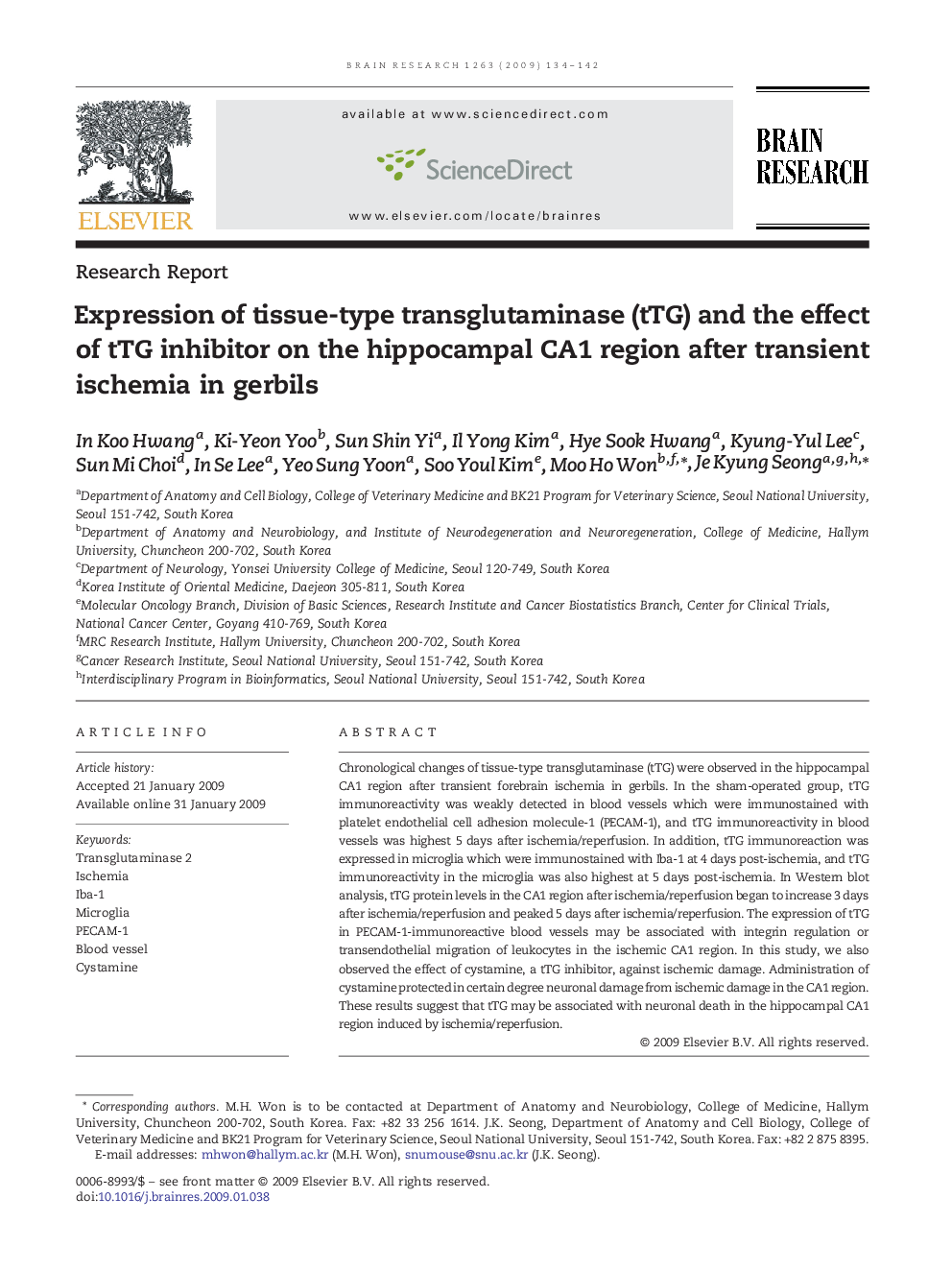| Article ID | Journal | Published Year | Pages | File Type |
|---|---|---|---|---|
| 4328403 | Brain Research | 2009 | 9 Pages |
Abstract
Chronological changes of tissue-type transglutaminase (tTG) were observed in the hippocampal CA1 region after transient forebrain ischemia in gerbils. In the sham-operated group, tTG immunoreactivity was weakly detected in blood vessels which were immunostained with platelet endothelial cell adhesion molecule-1 (PECAM-1), and tTG immunoreactivity in blood vessels was highest 5Â days after ischemia/reperfusion. In addition, tTG immunoreaction was expressed in microglia which were immunostained with Iba-1 at 4Â days post-ischemia, and tTG immunoreactivity in the microglia was also highest at 5Â days post-ischemia. In Western blot analysis, tTG protein levels in the CA1 region after ischemia/reperfusion began to increase 3Â days after ischemia/reperfusion and peaked 5Â days after ischemia/reperfusion. The expression of tTG in PECAM-1-immunoreactive blood vessels may be associated with integrin regulation or transendothelial migration of leukocytes in the ischemic CA1 region. In this study, we also observed the effect of cystamine, a tTG inhibitor, against ischemic damage. Administration of cystamine protected in certain degree neuronal damage from ischemic damage in the CA1 region. These results suggest that tTG may be associated with neuronal death in the hippocampal CA1 region induced by ischemia/reperfusion.
Related Topics
Life Sciences
Neuroscience
Neuroscience (General)
Authors
In Koo Hwang, Ki-Yeon Yoo, Sun Shin Yi, Il Yong Kim, Hye Sook Hwang, Kyung-Yul Lee, Sun Mi Choi, In Se Lee, Yeo Sung Yoon, Soo Youl Kim, Moo Ho Won, Je Kyung Seong,
